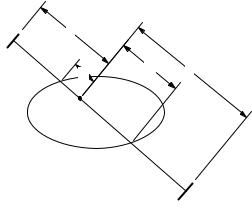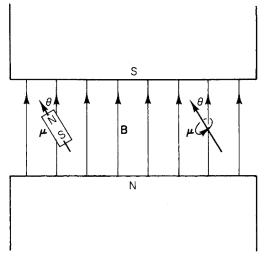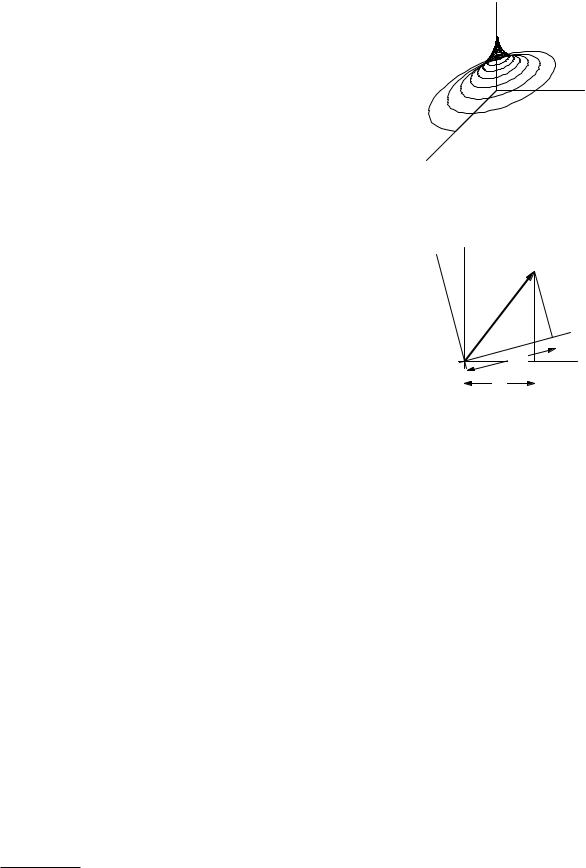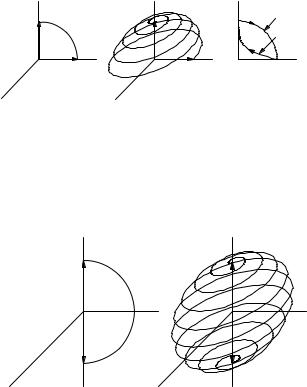
Intermediate Physics for Medicine and Biology - Russell K. Hobbie & Bradley J. Roth
.pdf
|
References |
513 |
Cherry, S. R., J. A. Sorenson, and M. E. Phelps (2003). |
Loevinger, R., T. F. Budinger, and E. E. Watson |
|
Physics in Nuclear Medicine, 3rd ed. Philadelphia, |
(1988). MIRD Primer for Absorbed Dose Calculations. |
|
Saunders. |
New York, Society of Nuclear Medicine. |
|
Co ey, J. L., and E. E. Watson (1979). Calculating the |
Nag, S. ed. (1994). High Dose Rate Brachytherapy: A |
|
dose from remaining body activity: A comparison of two |
Textbook. Armonk, NY, Futura. |
|
methods. Med. Phys. 6(4): 307–308. |
Patterson, J. C., and M. L. Mosley (2005). How avail- |
|
Coursey, B. M. and R. Nath (2000). Radionuclide ther- |
able is positron tomography in the United States? Mol. |
|
apy. Physics Today 53(4): 25–30. |
Imaging Biol. 7(3): 197–200. |
|
Dillman, L. T., and F. C. Von der Lage (1974). Ra- |
Rehm, K., S. C. Strother, J. R. Anderson, K. A. |
|
dionuclide Decay Schemes and Nuclear Parameters for |
Schaper, and D. A. Rottenberg (1994). Display of |
|
Use in Radiation Dose Estimation. NM/MIRD Pamphlet |
merged multimodality brain images using interleaved pix- |
|
10. New York, Society of Nuclear Medicine. |
els with independent color scales. J. Nucl. Med. 35: 1815– |
|
Eckerman K. F., R. J. Westfall, J. C. Ryman, and M. |
1821. |
|
Cristy (1994). Availability of nuclear decay data in elec- |
Sastry, K. S. R. (1992). Biological e ects of the Auger |
|
tronic form, including beta spectra not previously pub- |
emitter iodine-125: A review. Report No. 1 of the AAPM |
|
lished. Health Phys. 67(4): 338–345. |
Nuclear Medicine Task Group No. 6. Med. Phys. 19(6): |
|
Eisberg, R., and R. Resnick (1985). Quantum Physics |
1361–1370. |
|
of Atoms, Molecules, Solids, Nuclei, and Particles, 2nd |
Snyder, W. S., M. R. Ford, and G. G. Warner (1976). |
|
ed. New York, Wiley. |
Specific Absorbed Fractions for Radiation Sources Uni- |
|
Evans, R. D. (1955). The Atomic Nucleus. New York, |
formly Distributed in Various Organs of a Heterogeneous |
|
McGraw-Hill. |
Phantom. NM/MIRD Pamphlet 5, revised. New York, |
|
Fox, R. A. (2002). Intravascular brachytherapy of the |
Society of Nuclear Medicine. |
|
coronary arteries. Phys. Med. Biol. 47: R1–R30. |
Snyder, W. S., M. R. Ford, G. G. Warner, and H. L. |
|
Fritzberg, A. R., and B. W. Wessels (1995). Therapeu- |
Fisher (1969). Estimates of Absorbed Fractions for Mono- |
|
tic radionuclides. In H. N. Wagner, Jr., Z. Szabo, and J. |
energetic Photon Sources Uniformly Distributed in Var- |
|
W. Buchanan, eds. Principles of Nuclear Medicine, 2nd |
ious Organs of a Heterogeneous Phantom. NM/MIRD |
|
ed. Philadelphia, Saunders, pp. 229–234. |
Pamphlet 5. New York, Society of Nuclear Medicine. |
|
Howell, R. W. (1992). Radiation spectra for Auger- |
Snyder, W. S., M. R. Ford, G. G. Warner, and S. |
|
emitting radionuclides: Report No. 2 of the AAPM Nu- |
B. Watson (1975). S, Absorbed Dose per Unit Cumu- |
|
clear Medicine Task Group No. 6. Med. Phys. 19(6): |
lated Activity for Selected Radionuclides and Organs. |
|
1371–1383. |
NM/MIRD Pamphlet 11. New York, Society of Nuclear |
|
Humm, J. L., R. W. Howell, and D. V. Rao (1994). |
Medicine. |
|
Dosimetry of Auger-electron-emitting radionuclides: Re- |
Stabin, M. G., and L. C. Q. P. da Luz (2002). Decay |
|
port No. 3 of the AAPM Nuclear Medicine Task Group |
data for internal and external dose assessment. Health |
|
No. 6. Med. Phys. 12(12): 1901–1915. |
Phys. 83(4): 471–475. |
|
Hunt J.G., F. C. da Silva and C. L. Mauricio (2004). |
Stabin, M. G., R. B. Sparks, and E. Crowe (2005). |
|
The validation of organ dose calculations using voxel sim- |
OLINDA/EXM: The second-generation personal com- |
|
ulators and Monte Carlo methods applied to point and |
puter software for internal dose assessment in nuclear |
|
water immersion sources. Rad. Prot. Dosimetry 108(1): |
medicine. J. Nucl. Med. 46(6): 1023–1027. |
|
85–89. |
Strother, S. C., J. R. Anderson, Jr., K. A. Schaper, |
|
Kaluza, G. L.. and A. E. Raizner (2004). Brachyther- |
J. J. Sidtis, J. S. Liow, R. P. Woods, and D. A. Rot- |
|
apy for restenosis after stenting for coronary artery dis- |
tenberg (1995). Principal component analysis and the |
|
ease: its role in the drug-eluting stent era. Current Opin- |
scaled subprofile model compared to intersubject averag- |
|
ion in Cardiol. 19: 601–607. |
ing and statistical parametric mapping: I. Functional con- |
|
Kassis, A. I. (2004). The amazing world of Auger elec- |
nectivity of the human motor system studied with 15O- |
|
trons. Int. J. Rad. Biol., 80(11-12): 789–803. |
water PET. J. Cerebral Blood Flow Metab. 15(5): 738– |
|
Larsson, S. A. (1980). Gamma camera emission to- |
753. |
|
mography: Development and properties of a multisec- |
Watson, E. E., M. G. Stabin, and J. A. Siegel |
|
tional emission computed tomography system. Acta Ra- |
(1993). MIRD formulation. Med. Phys. 20(2, Pt. 2): 511– |
|
diol. (Suppl. 363). |
514. |
|
Links, J. M., and J. C. Engdahl (1995). Planar imaging. |
Weber, D. A., K. F. Eckerman, L. T. Dillman, |
|
Chapter 17 in H. N. Wagner, Jr., Z. Szabo, and J. W. |
and J. C. Ryman (1989). MIRD: Radionuclide Data |
|
Buchanan, eds. Principles of Nuclear Medicine, 2nd ed. |
and Decay Schemes. New York, Society of Nuclear |
|
Philadelphia, Saunders. |
Medicine. |
|










